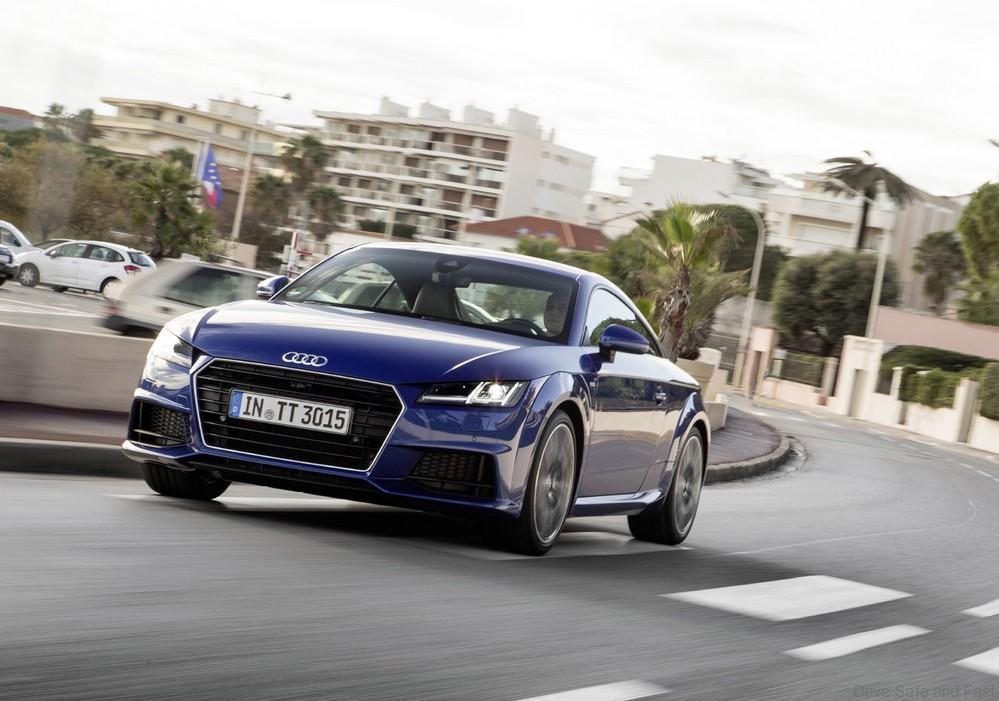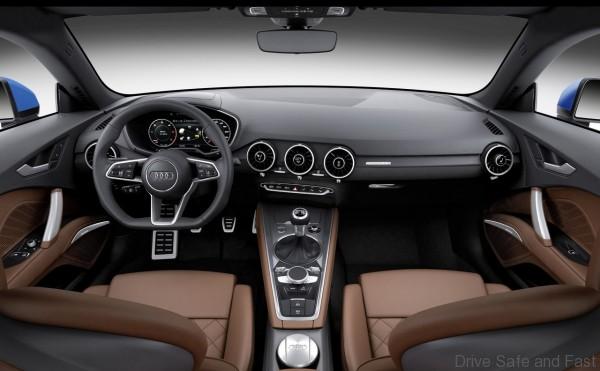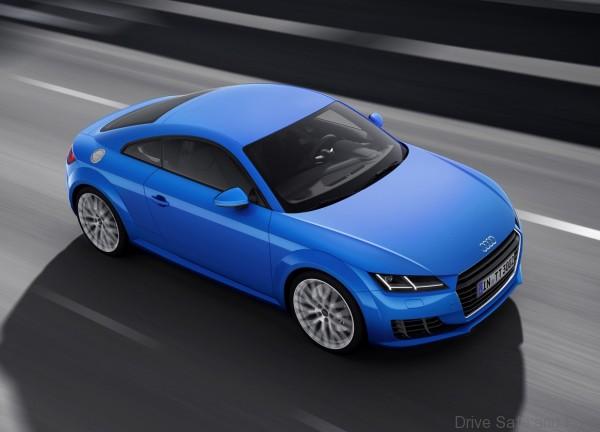When the first-generation Audi TT came on the market in 1998 it was a design revolution, it’s strictly geometrical, formally coherent design language made it an icon with huge charisma. For the third TT generation, the Audi designers have returned to many of these ideas and placed them in a new context that is as dynamic as it is diverse.
The front of the new TT is dominated by horizontal lines. The Singleframe grille is much broader and flatter than that of the previous model, with a powerful line dividing it into two zones. Starting in the top corners of the grille, sharp contours run in a V across the hood, which bears the four Audi rings – as on the Audi R8 high-performance sports car.
The smallest and lightest car so far built on the MQB modular platform, the TT is already available for order with prices in Germany. Lightweight construction is one of Audi’s greatest areas of expertise. The second-generation Audi TT already featured an Audi Space Frame (ASF) body made from aluminum and steel. For the new TT, Audi has systematically taken this composite construction principle even further, in line with the idea: the right amount of the right material in the right place for optimal functions.
The Coupé’s underbody structure has optimized axle loads and is made of modern, high-strength and ultra-high-strength steel alloys. In the sections of the passenger cell that are subject to the most structural stress, form-hardened steel panels, which are both ultra-high-strength and light are used – these constitute 17% of the body’s weight. The side sills and roof frame are made of extruded aluminum profiles that are integrated into the structure using cast aluminum nodes. This structural principle creates a very rigid and safe bodyshell. The aluminum side sections and roof complete the structure. The hood, doors and trunk lid are also made of this light metal.
All in all, the Audi engineers have, for the second time in a row, succeeded in significantly reducing the unladen weight of the Audi TT. At the first model change in 2006, up to 90 kg were saved, and the 2.0 TFSI engine variant of the new TT weighs just 1,230 kg. This makes it around 50 kg lighter than its predecessor.
The low overall weight is further proof of Audi’s expertise in lightweight construction. It impacts positively especially on acceleration, handling and fuel consumption.
Over half a million units of the previous two TT generations have been built and sold. The German company belies the technology and performance on offer could make the Mk3 an even more successful car.








